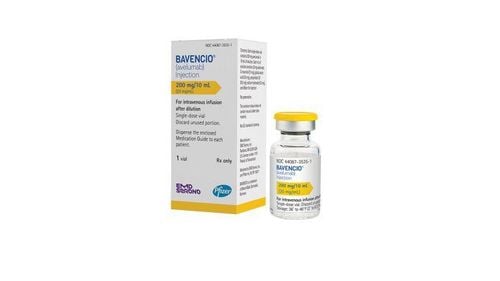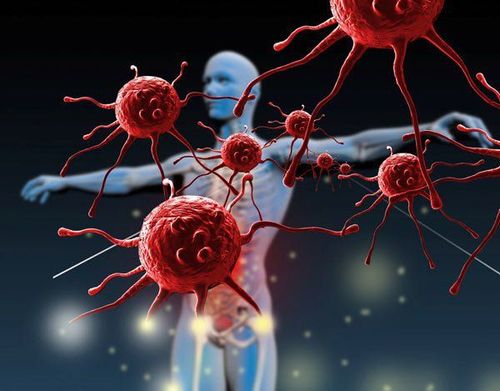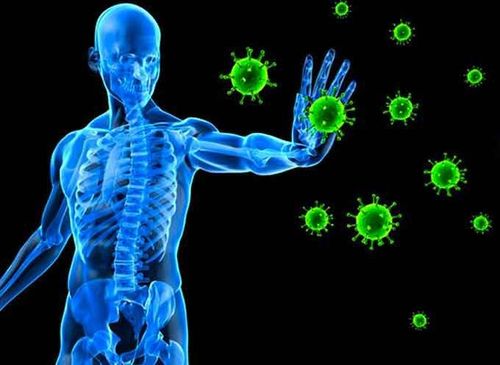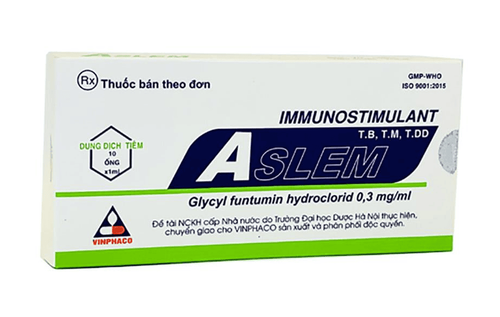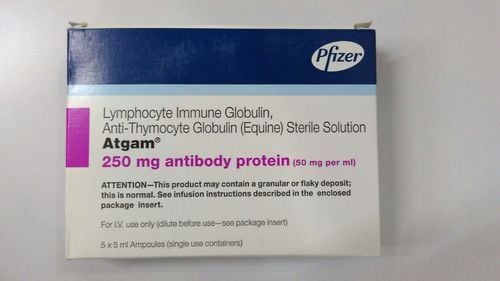This is an automatically translated article.
Article by MSc Nguyen Van Office - Vinmec Institute of Stem Cells and Gene Technology.
The immune system is a barrier with many layers of defense that helps the body to prevent pathogens by recognizing and destroying foreign antigens, preventing them from causing harm to the body.
1. Classification of the immune system
The immune system is divided into two types: non-specific (innate) and specific (acquired) immunity.1.1. Non-Specific Immunity Non-specific immunity is a self-defense ability that is inherent in the body at birth, is inherited, and does not require prior exposure of the body to an invading foreign antigen. first or next time.
Non-specific immunity helps the body to prevent the invasion of microorganisms into tissues and quickly eliminate these organisms if they penetrate the tissues in the body. Components of the non-specific immune system include: skin, mucous membranes and antimicrobial substances secreted on these surfaces, cells capable of detecting and destroying foreign objects (dendritic cells). , macrophages, NK natural killer cells, neutrophils...), complement system and cytokines (interferon-alpha, interleukkin-1...).
A nonspecific immune response can appear within minutes to hours after the microorganism enters the body. However, this response is short-lived and is not reinforced when the body encounters the same stimulus again (inability to remember).
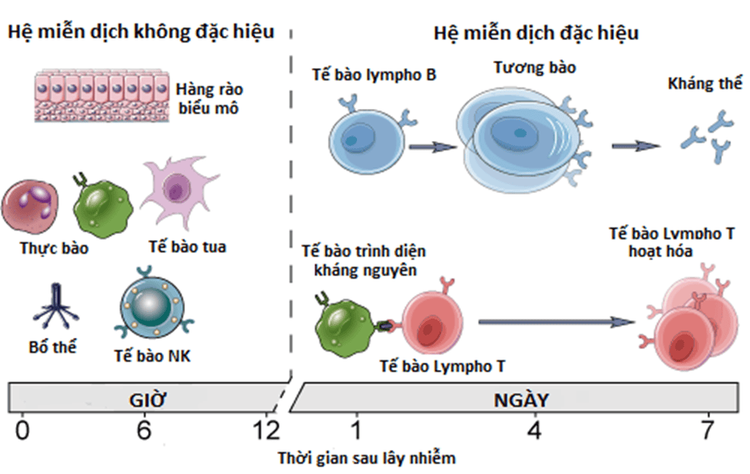
Hình 1. Hệ miễn dịch không đặc hiệu và hệ miễn dịch đặc hiệu
1.2. Specific Immune System Specific immunity is the state of immunity that occurs when the body has been exposed to antigens (initiated or unintentionally). Specific immunity can also be obtained by infusion of immune competent cells or antibodies into the body.
The specific immune response takes a period of days to weeks for recognition, activation, and effect. The specific immune response has the ability to remember and recognize a specific pathogen that has been eliminated. As a result, the immune system is able to attack faster and more effectively if it encounters that pathogen again. The specific immune system has two modes of humoral immunity and cell-mediated immunity (cellular immunity) to eliminate foreign antigens entering the body.
Humoral immunity
Humoral immunity is a specific form of immunity expressed by the production of antibodies capable of fighting against foreign microorganisms and cells entering the body. Antibodies (globulins) produced by differentiated B lymphocytes are secreted into the circulatory system and the secretions of the mucous membranes to prevent microorganisms from entering the cells and connective tissues. However, antibodies are not able to bind to live microorganisms and multiply inside the cells of the body that are infected with them.
Cell-mediated immunity
Cell-mediated immunity is a method of immune response against cells that have been infected with viruses, bacteria or abnormal cells through cell-mediated effects T lymphocytes.
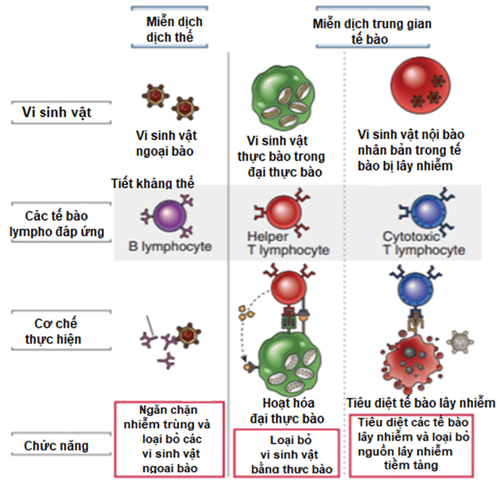
Hình 2. Vai trò của tế bào Lympho B và Lympho T trong đáp ứng miễn dịch dịch thể và miễn dịch trung gian tế bào
2. How does cell-mediated immunity work?
Initiation and development of cell-mediated immunity always requires foreign antigens to be captured and presented to T lymphocytes. The cell responsible for antigen capture and presentation is called Antigen Presenting Cells (APCs).
Antigen-presenting cells such as dendritic cells (DCs), macrophages and B cells, they capture microorganisms from outside entering the body, transport them These antigens reach the lymphoid organs and present antigens to T lymphocytes to initiate an immune response.
This is a specific type of immune response undertaken by T lymphocytes, T lymphocytes originating from the bone marrow and differentiated in the thymus. The surface of T lymphocytes all express surface proteins (markers or CD - cluster of differentiation).
Based on surface CDs, T lymphocytes are classified into 2 main subtypes, cytotoxic T cells (CD8+ T cells) and helper T cells (CD4+ T cells). Therefore, the activity of the cell-mediated immune system is mainly based on the recognition of the antigen-MHC complex (MHC-major histocompatity complex) on the surface of antigen-presenting cells of T lymphocytes.
.
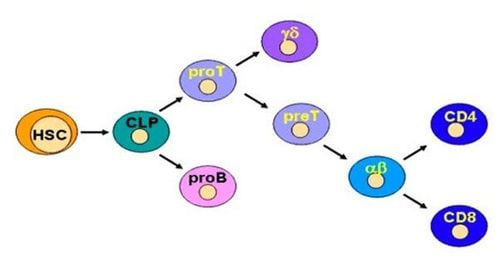
Tế bào T CD4 và CD8+
2.1 Specific immune response via cytotoxic T cells (CD8+ T cells): CD8+ T cells are cells that have the ability to specifically recognize and bind to foreign antigens of intracellular origin (viral proteins). , bacterial protein, cancer cell protein). These antigens are transported to the APC surface by the MHC class I complex and presented to CD8+ T cells. After the process of recognizing foreign antigens, T cells (CD8+ T cells) directly destroy cells infected with viruses, bacteria or cancer cells through cytokine secretion (IFN-γ and TNF-α) and process apoptosis (programmed cell death).
2.2 Specific immune response through helper T cells (CD4+ T cells): Unlike CD8+ T cells, CD4+ T cells have the ability to specifically recognize and bind to foreign antigens (bacterial proteins). , soluble proteins). Antigens of extracellular origin are phagocytosed by APCs, processed to transport antigens to the APC surface by the MHC class II complex, and presented to CD4+ T cells.
After recognizing the antigen, the CD4+ T cells are activated and secrete interleukins (IL-2, IL-4...) to help activate and stimulate the proliferation of many other cells such as CD4+ T cells. , CD8+ T cells and B lymphocytes. In which, B lymphocytes are differentiated to become antibody-producing cells that help eliminate antigens, while CD8+ T cells have the ability to directly destroy antigens. virus-infected cells. In addition, some of these activated cells become memory cells for this antigen.
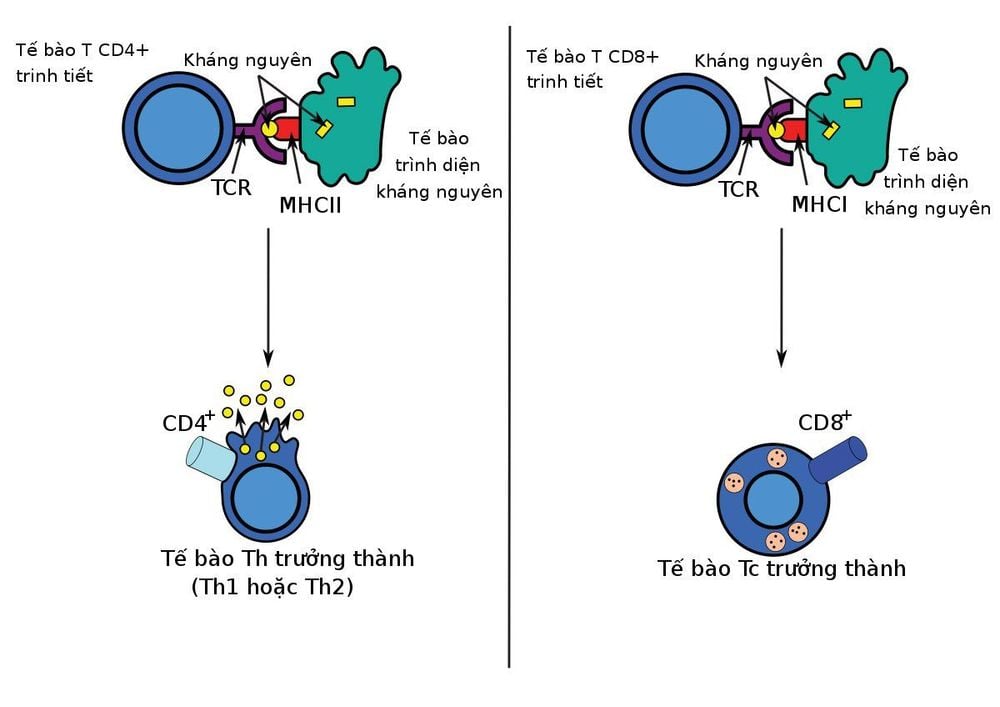
Tế bào T hỗ trợ (T CD4+) với khả năng nhận diện kháng nguyên lạ
3. Application of autologous immune boosting therapy in supporting cancer treatment
In addition to the function of preventing the entry of harmful agents (viruses and bacteria) into the human body, our immune system also has a very important role in controlling the development of cancer. growth of cancer cells. Many scientific studies have shown that when the body's immune system is weakened, the risk of cancer increases. Therefore, the regulation and strengthening of the autologous immune system is an important key in preventing the development of cancer cells.
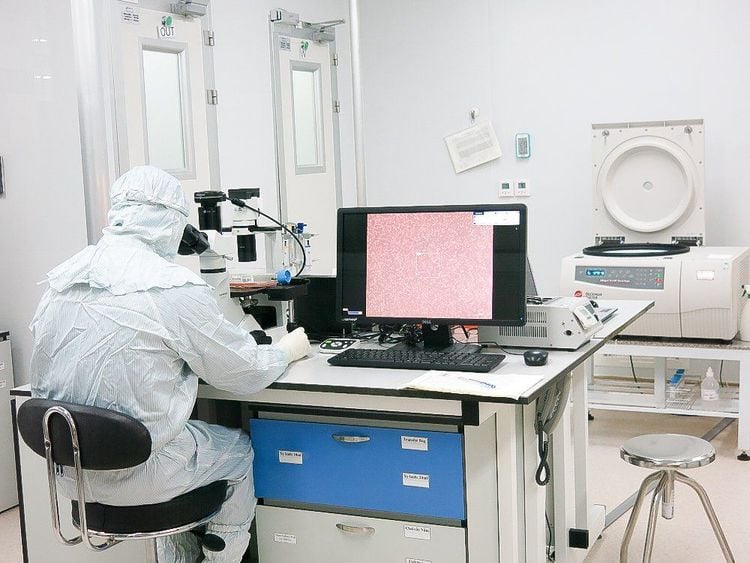
Ứng dụng liệu pháp miễn dịch tự thân trong hỗ trợ điều trị ung thư tại Vinmec
Traditional cancer treatments such as radiation therapy, chemotherapy and surgery have yielded some results. However, patients have to experience physical pain, as well as face many unwanted side effects from these therapies such as hair loss, fatigue, insomnia, anemia due to decreased cell count. red blood cells and white blood cells, easy to infect... seriously affect the health and life time of the patient.
Today, autologous immune boosting therapy is becoming one of the safe, effective and painless treatments for patients, as well as not harming and destroying cells and tissues. healthy... so, the patient quickly recovers and returns to normal activities.
Currently, Vinmec International General Hospital is the first facility in Vietnam that is applying autologous immune-boosting therapy to support cancer treatment. In this therapy, immune cells (NK natural killer cells and cytotoxic T cells) are isolated from the patient's peripheral blood and cultured for increased activity under special laboratory conditions. experience. Through the process of culture, immune cells or more with high immune activity such as the ability to destroy cancer cells, cells infected with viruses or bacteria and are transmitted back to the patient.
References:
Abbas, A. K., Lichtman, A. H., & Pillai, S. (2018). Properties and overview of immune responses. Cellular and Molecular Immunology. 9th ed. Philadelphia, PA: Elsevier. GS. Dr. Nguyen Ngoc Lanh and Prof. Dr. Van Dinh Hoa (2011). Immunology. Medical Publisher. MORE:
What is the immune system? The Importance of the Immune System Understanding Active Immunity and Passive Immunity Autologous Immune Enhancement Therapy (AIET)




